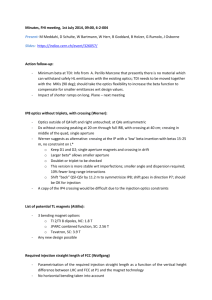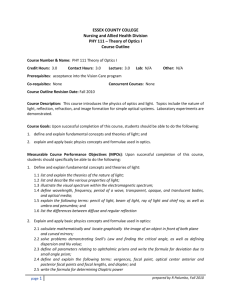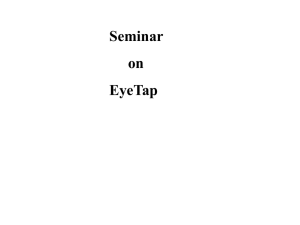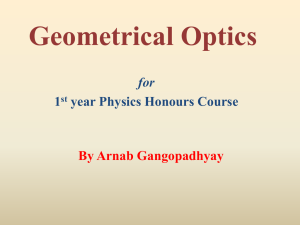Meeting on ELENA Transfer Lines
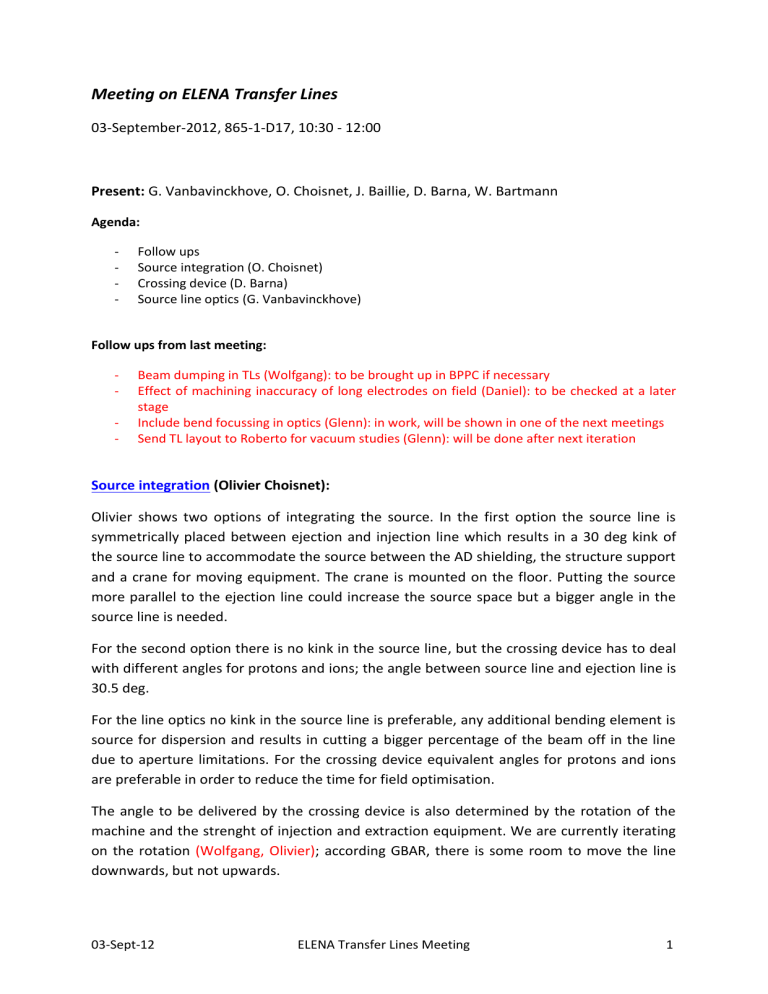
Meeting on ELENA Transfer Lines
03-September-2012, 865-1-D17, 10:30 - 12:00
Present: G. Vanbavinckhove, O. Choisnet, J. Baillie, D. Barna, W. Bartmann
Agenda:
Follow ups
Source integration (O. Choisnet)
Crossing device (D. Barna)
Source line optics (G. Vanbavinckhove)
Follow ups from last meeting:
Beam dumping in TLs (Wolfgang): to be brought up in BPPC if necessary
Effect of machining inaccuracy of long electrodes on field (Daniel): to be checked at a later stage
Include bend focussing in optics (Glenn): in work, will be shown in one of the next meetings
Send TL layout to Roberto for vacuum studies (Glenn): will be done after next iteration
Source integration (Olivier Choisnet):
Olivier shows two options of integrating the source. In the first option the source line is symmetrically placed between ejection and injection line which results in a 30 deg kink of the source line to accommodate the source between the AD shielding, the structure support and a crane for moving equipment. The crane is mounted on the floor. Putting the source more parallel to the ejection line could increase the source space but a bigger angle in the source line is needed.
For the second option there is no kink in the source line, but the crossing device has to deal with different angles for protons and ions; the angle between source line and ejection line is
30.5 deg.
For the line optics no kink in the source line is preferable, any additional bending element is source for dispersion and results in cutting a bigger percentage of the beam off in the line due to aperture limitations. For the crossing device equivalent angles for protons and ions are preferable in order to reduce the time for field optimisation.
The angle to be delivered by the crossing device is also determined by the rotation of the machine and the strenght of injection and extraction equipment. We are currently iterating on the rotation (Wolfgang, Olivier) ; according GBAR, there is some room to move the line downwards, but not upwards.
03-Sept-12 ELENA Transfer Lines Meeting 1
Crossing device (Dani Barna):
Daniel shows a compact 500 mm diameter “roundabout”; all beam lines have an 80 mm opening. This device is mechanically feasible, vacuum pumps could be mounted from below or above; the cost should be moderate compared to the 1m diameter roundabout.
For the electrode voltages, currently the 1L and the 1R electrode are biased with opposite voltages, and 2L opposite to the middle electrode and 2R; all polarities flipped for protons; the outer electrode 2R and 2L do not affect significantly the field in case the beam is going in the other channel. The switching between protons and ions is considered to be slow. DC mode can be assumed for the power converters.
Daniel is showing the optimum voltages where particles with zero displacement (x) and angle (x’) at the device entrance also leave with zero x and x’ at the exit. The voltages amount to +/-24.5 and +/-19 kV.
According the effects on the optics, there is reasonable focussing in both planes, but a large dispersion angle created by the crossing device. Some optimisation on the dispersion can be done; a maximum value for the dispersion and its angle is needed (Glenn, Wolfgang).
Optics of source lines (Glenn Vanbavinckhove):
Glenn shows preliminary results on the source line optics; Fine matching is not done due to the uncertainty of the geometry, also the crossing device transfer matrix needs to be implemented;
The source line needs to provide different optics due to the different end conditions at injection into the ELENA ring. The extraction line is using the same hardware and same positions as for pbar extraction; the voltages on the devices are changed to match the optics functions at the proton injection point in the ring. For the injeciton line, a minimum number of additional quads is implemented between the crossing device and the injection septum; currently there are no quadrupoles or bends in this area, to be checked if instrumentation, vacuum etc needs space there (Wolfgang) .
The optics for the injection line without additional quadrupoles in the injection line ends up into a dispersion of 200 m at the injection point. With one triplet in the source line and five additional quads in the injeciton line the dispersion can be limited to -20 m. This dispersion peak coincides with a peak in the betatron function; the beam size with quadratic sum of betatron and dispersion part assuming a physical emittance of 70 pi urad amounts to +/-32 mm. This would result in a significant scraping of the H- beam. The peak voltage required is
30 kV. The optics is not perfectly matched to the parameters at the injeciton point.
The optics of the source to extraction line is matched; the peak voltage again 30 kV. Here the dispersion goes up to 30 m, but due to the dominant betatron beam size there is no critical aperture bottleneck identified. All quadrupoles in the source lines are independently powered. There will be about 10-12 quadrupoles in the FODO cells with the same voltage.
03-Sept-12 ELENA Transfer Lines Meeting 2
All voltages mentioned are for quadrupoles with an aperture of 60 mm.
The optics of the extraction line for pbar has a dispersion between -6 and +4m and betatron functions of up to 30 m; the quadrupole peak voltage is 14 kV.
According the length of the source line and position of quadrupoles the requirements of the vacuum system and instrumentation in the source line need to be known; pumping the crossing device, differential pumping in the line? (Roberto, Glenn)
For power converter dimensioning the current drawn by the load has to be known. Dani suggests to measure the ASACUSA triplet still this week before its installation (Dani, John) .
Next meeting: to be announced
03-Sept-12 ELENA Transfer Lines Meeting 3
